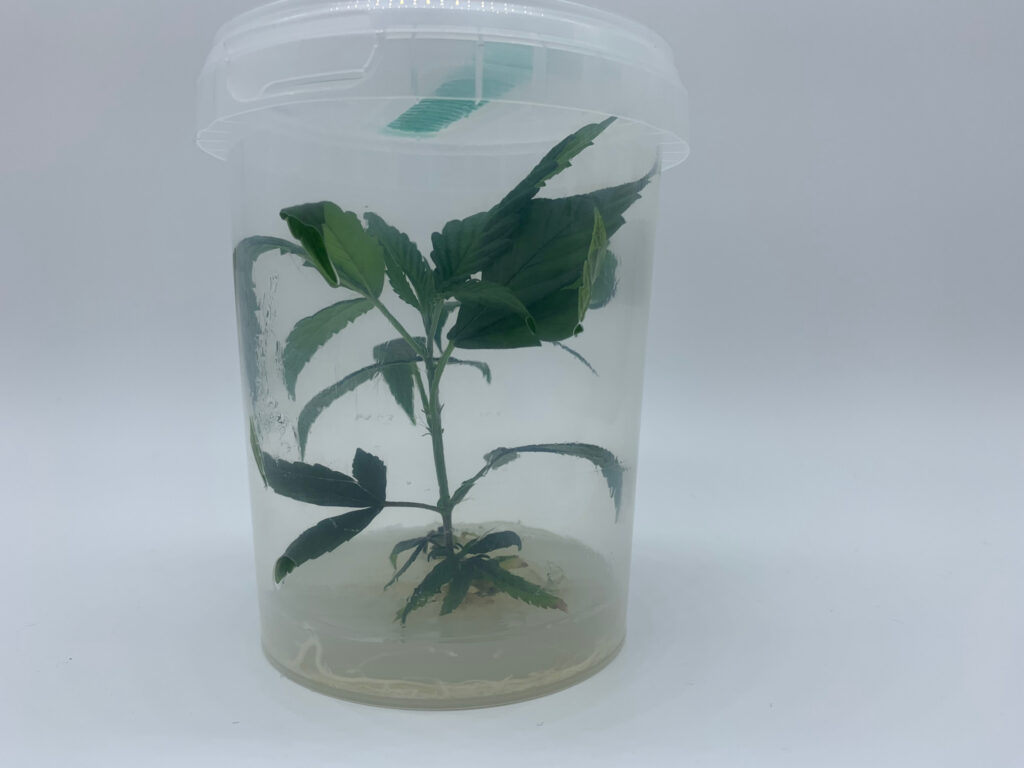As commercial cannabis production in the US has grown over the last two decades, so have challenges associated with pests and disease. Whether you grow 12 or 120,000 plants a year, chances are good that you’ve experienced losses due to virus/viroid, fungus, bacteria, or insects.
Most threats observable with the naked eye, such as powdery mildew, mites, or whitefly, are quite managle with proper IPM. However, once a virus or viroid infects a plant, there is no way to fully recover. Unlike animals, the immune systems of plants lack the ability to seek out and destroy invaders. Instead, plants respond by attempting to inhibit, isolate, and/or outgrow infection. This buys enough time to produce uninfected seed so the next generation has a clean start.
Hop Latent Viroid (HpLVD) is one of the newest and most devastating pathogens to hit the cannabis industry. Unlike a virus that has genetic material surrounded by a protein shell, a viroid is just a short circular RNA molecule, making it the smallest infectious agent on the planet (Don’t worry, viroids only infect plants, so far as we know….)
HpLVD was first identified in cannabis only a few years ago where it was linked to “cannabis dudding disease.” The most common symptoms include abnormal branch architecture (witches broom), slow and stunted growth, reduced pest and pathogen resistance, and significant loss of yield – often greater than 50%. What makes HpLVD such a high risk threat to the industry is its phenomenal rate of transmission. Since it was first characterized in California, HpLVD has spread nationwide and is thought to be responsible for billions in losses each year.
As discussed, once a viroid or virus infection is identified in your facility, the only option to prevent rapid transmission to the entire population is to eliminate infected plants immediately. This is doubly true if infection reaches your mother plants. Cuttings taken from infected, low yielding mother stock will grow up to be…. infectious, low yielding daughter plants.
But what if infection reaches your prized, irreplaceable, epically dank genetics? Are you SOL?
Not quite. Clever humans have figured out ways to eliminate virus and viroid from plant tissue, allowing production of healthy, pathogen free clones from originally infected tissue samples. You’ll find these clever humans working in plant tissue culture labs.
Over the next few articles, we’ll cover how it all works and how you can (intelligently) leverage plant tissue culture to improve your business, including:
- The biology of plant tissue culture (TC) and pathogen elimination.
- The Pros & Cons of sourcing tissue culture clones as your starting material.
- How to find a reputable and consistent TC lab capable of meeting the demands of your particular business.
- What documentation and analyses to ask for to confirm whether clones are truly pest and pathogen free.
- How to prevent reintroduction of pests and disease to your facility.
- How to maximize the value and benefits of TC clones.
Stay tuned. We’ll see you in the next issue.
Hope Jones & Chris “Pagz” Pagliarulo
First Kind Laboratories, LLC
